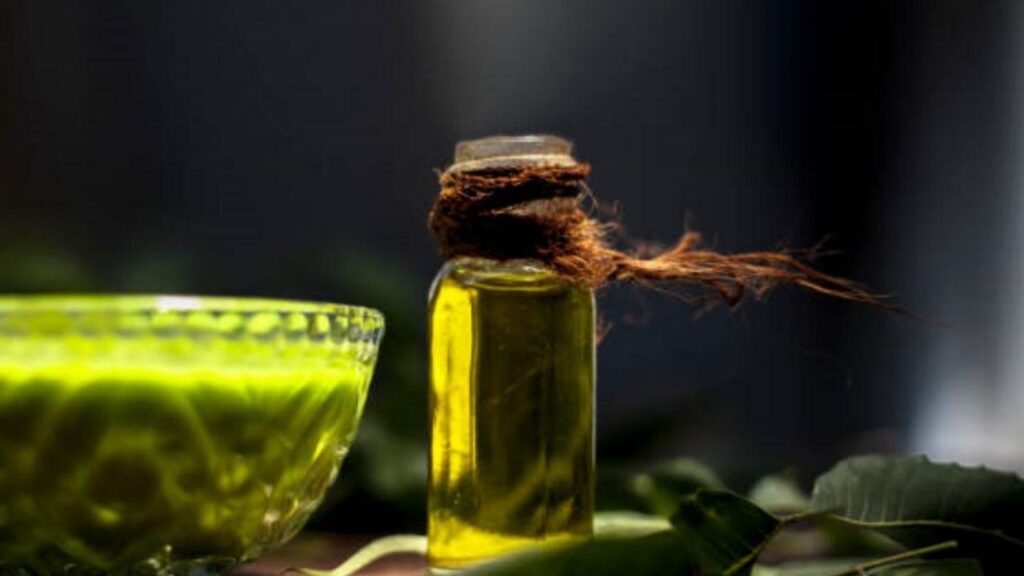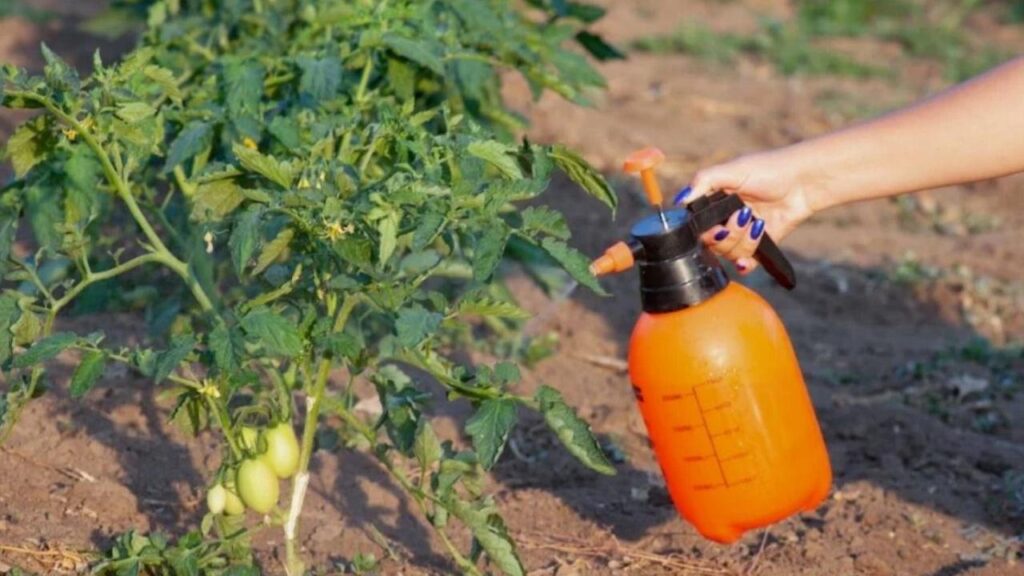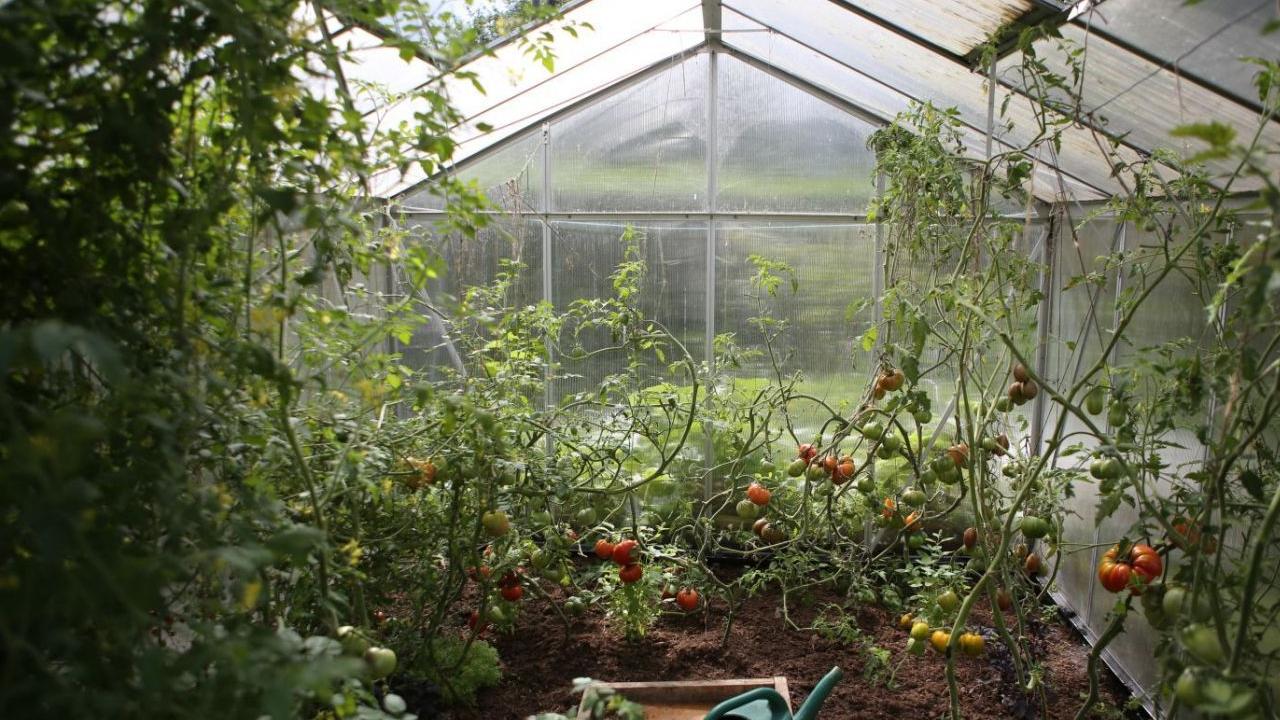Neem oil has become a well-liked option for disease prevention and pest management in the realm of organic agriculture. This is especially true for tomato plants because they are prone to a wide range of pests and illnesses. Neem oil is used to treat tomato plants, and this article will go through the advantages, application techniques, and safety measures.
Neem Oil: What Is It?
The seeds of the neem tree, a native of the Indian subcontinent, are the source of neem oil, a natural product. Due to its strong antifungal, antibacterial, and insecticidal characteristics, it has been utilized in traditional medicine and agriculture for ages. In many organic insecticides and fungicides used today, including those for tomato plants, it is a widely utilized component.

The neem tree, also called Azadirachta indica, is well recognized for its medical and agricultural benefits. It is a member of the mahogany family. Similar to how olive oil is created, the neem seeds are cold-pressed to extract the oil. The end result is a yellowish-brown oil that smells strongly like garlic.
Neem oil benefits for tomato plants
Tomato plants can benefit from neem oil in a number of ways. Its main benefit is its capacity to manage a variety of pests, including tomato hornworms, whiteflies, spider mites, and aphids. Neem oil functions by interfering with these pests’ life cycles, making it an efficient long-term remedy.
Neem oil not only controls pests but also shields tomatoes from blight, fusarium wilt, and early blight. It accomplishes this by forming a barrier of defense on the plant’s surface that prevents the development of dangerous bacteria and fungus. Apart from using neem oil, there are other ways to protect your tomato plants, such as taking measures to prevent deer from eating your tomato plants.
Neem oil offers advantages beyond the prevention of illness and pests, though. It also works well as a foliar feed, giving the plant the nutrients it needs. Neem oil can increase plant growth and health when combined with water and sprayed on leaves.

Neem Oil for Tomato Plants: Use and Care
Neem oil application to tomato plants is a simple procedure. Here is a detailed instruction:
- To produce the neem oil solution, mix 2 tablespoons of neem oil with 1 gallon of water. You can also add a few drops of dish soap to make the oil and water mix together more easily.
- Use a spray bottle or garden sprayer to administer the neem oil solution to your tomato plants. Include the plant’s undersides, where pests commonly hide, in your coverage.
- Repeat the Application: Apply the neem oil solution once a week as a preventative measure. If you’re battling an active illness or infestation, you might need to use it more frequently, like every few days.
To prevent scorching the plants in the blazing sun, always remember that the best times to spray neem oil are in the early morning or late evening.
When Using Neem Oil, Take Care
There are a few precautions you should take even though neem oil is often safe for both plants and beneficial insects:
- Test a tiny Area First: Test neem oil on a tiny area first and wait 24 hours to see if any harm occurs before using it on the entire garden.
- Steer clear of spraying during the warmest part of the day. Neem oil can burn leaves if applied then. Spraying is most effective in the early morning or late at night.
- Refrain from Spraying Blooming Plants: Neem oil should not be sprayed on plants that are in bloom in order to preserve pollinators.

Substitutes for neem oil
For organic gardeners, neem oil is a potent tool, but it’s not the only one. Introducing helpful insects, utilizing more plant oils and extracts, and maintaining proper garden cleanliness are some other natural pest control strategies.
To manage aphid numbers, for example, beneficial insects like ladybugs and lacewings might be introduced. Pests can also be repelled by other plant oils, such as eucalyptus and rosemary oil. Of course, one of the greatest methods to stop pest infestations and disease outbreaks is to maintain a clean, healthy garden.

An in-depth look of neem oil
There are numerous resources accessible if you’re interested in learning more about neem oil and its applications. Information can be found in abundance in books, online articles, and gardening discussion forums. For assistance and pointers, you can also consult local extension offices or seasoned gardeners.
Conclusion
When it comes to controlling pests and diseases in your tomato garden, neem oil is a flexible and powerful tool. You can assure a healthy and fruitful growth season by knowing how to use it effectively. Keep in mind that an all-encompassing strategy, including correct plant care and soil management as well as organically-friendly ways for controlling pests and diseases, is the key to successful organic gardening. Therefore, whether you’re an experienced gardener or are just getting started, think about include neem oil in your toolbox. Neem oil is an effective method for protecting tomato plants, but if you’re looking for other ways of growing tomatoes, you might be interested in growing tomatoes in grow bags. Enjoy your garden!




Leave a Comment